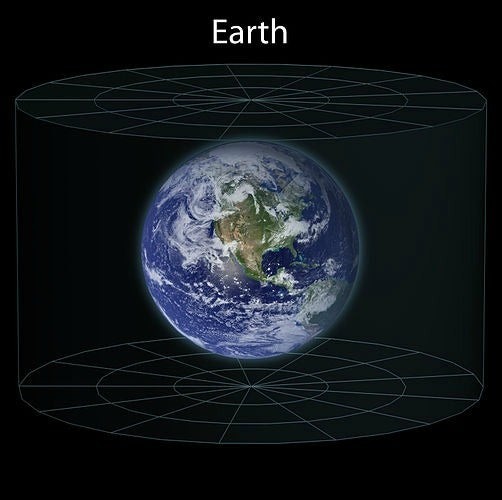The Earth, our home, feels vast and immense to us. But how does it measure up against the sheer scale of the cosmos? Prepare to have your perspective shifted as we explore the mind-boggling size of the universe compared to our tiny planet.
From Earth to the Moon: A Small Step
Earth, the fifth largest planet in our solar system, boasts a radius of 6,378 km at the equator. Light, the fastest thing in the universe, can circumnavigate our planet seven and a half times in a single second. Our moon, a celestial neighbor, orbits Earth at a distance of 385,000 km, roughly 60 times Earth’s radius. Light takes a mere 1.3 seconds to travel between Earth and the moon. While seemingly a vast distance, this is just a tiny hop in the grand scheme of things.
Our Solar System: A Vast Playground
Zooming out further, our solar system dwarfs Earth. The sun, our star, accounts for 99.86% of the solar system’s total mass. Earth contributes a minuscule 0.0003%. We orbit the sun at an average distance of 93 million miles, a distance defined as one Astronomical Unit (AU). Light from the sun takes approximately 8 minutes to reach us. Neptune, the farthest known planet, orbits at a staggering 30 AU. Even Voyager 1, humanity’s farthest-reaching spacecraft, is only about 119 AU away. The solar system’s estimated radius stretches to about two light-years.
Beyond Our Sun: The Milky Way Galaxy
Our solar system resides within the Milky Way galaxy, a swirling collection of hundreds of billions of stars. We orbit the galactic center at an average distance of 28,000 light-years, completing one orbit every 250 million years. The Milky Way itself spans 100,000 light-years and is estimated to contain up to 40 billion Earth-sized planets orbiting within the habitable zones of their stars. Adding to the vastness, a halo of dark matter, invisible to us, accounts for over 90% of the Milky Way’s mass.
Galactic Clusters and Superclusters: Cosmic Cities
The Milky Way belongs to a group of galaxies called the Local Group, spanning 10 million light-years. This cluster contains at least 47 galaxies, including our massive neighbor, the Andromeda Galaxy. Zooming out further, the Local Group is just one small part of the Virgo Supercluster, a colossal structure 110 million light-years across, containing thousands of galaxies. The Virgo Supercluster, in turn, is a component of the even larger Pisces-Cetus Supercluster Complex, stretching an astounding 1.37 billion light-years – a tenth of the observable universe!
The Observable Universe: The Limit of Our Vision
Finally, we reach the observable universe, the limit of what we can currently see. This sphere extends 93 billion light-years in diameter and contains billions of superclusters, trillions of galaxies, and an unfathomable number of stars – estimated to be 30 billion trillion.
Putting it into Perspective
The sheer scale difference between Earth and the universe is difficult to grasp. To illustrate:
- The Earth is roughly 3.5 million times larger than a human.
- The Solar System is 36 billion times larger than Earth.
- The Local Group is 1.4 x 10^17 times larger than Earth.
- The Virgo Supercluster is 1.5 x 10^18 times larger than Earth.
- The Pisces-Cetus Supercluster Complex is 1.9 x 10^21 times larger than Earth.
- The Observable Universe is a staggering 1.9 x 10^22 times larger than Earth.
From our planet’s perspective, the universe is an ocean of unimaginable vastness, filled with countless wonders waiting to be explored. Our journey from Earth to the edge of the observable universe reveals just how small we are in the grand cosmic tapestry, yet it also highlights the incredible scale of existence itself.


